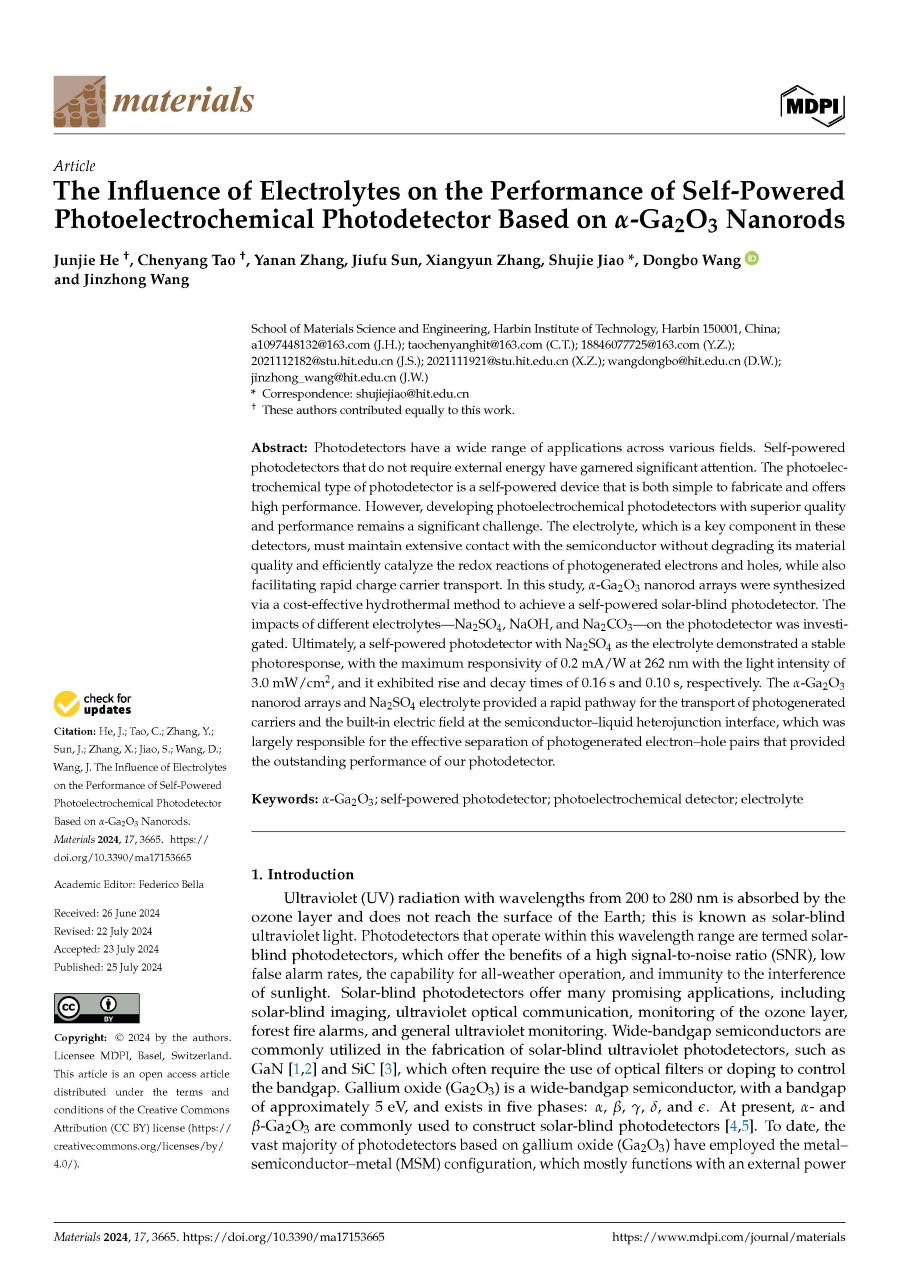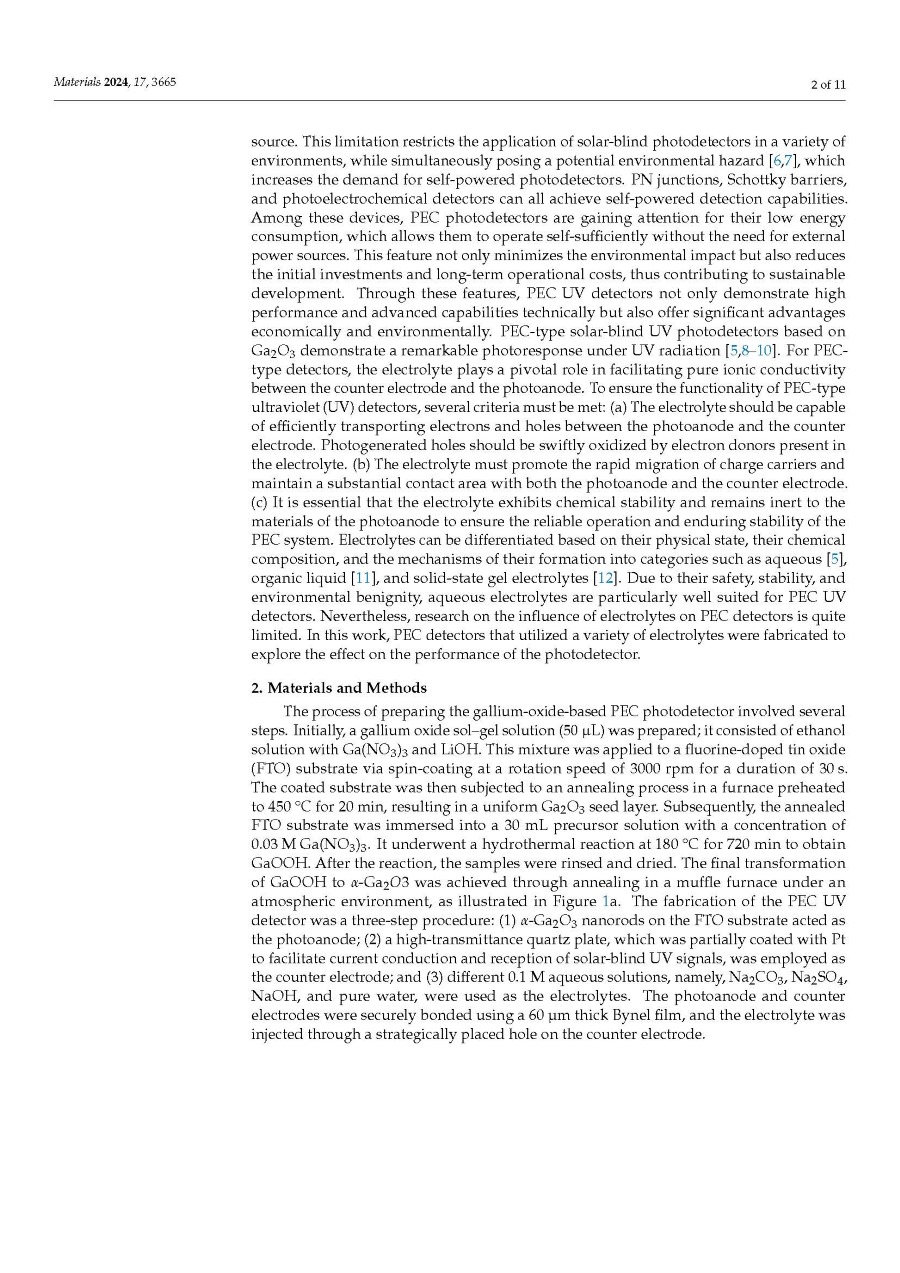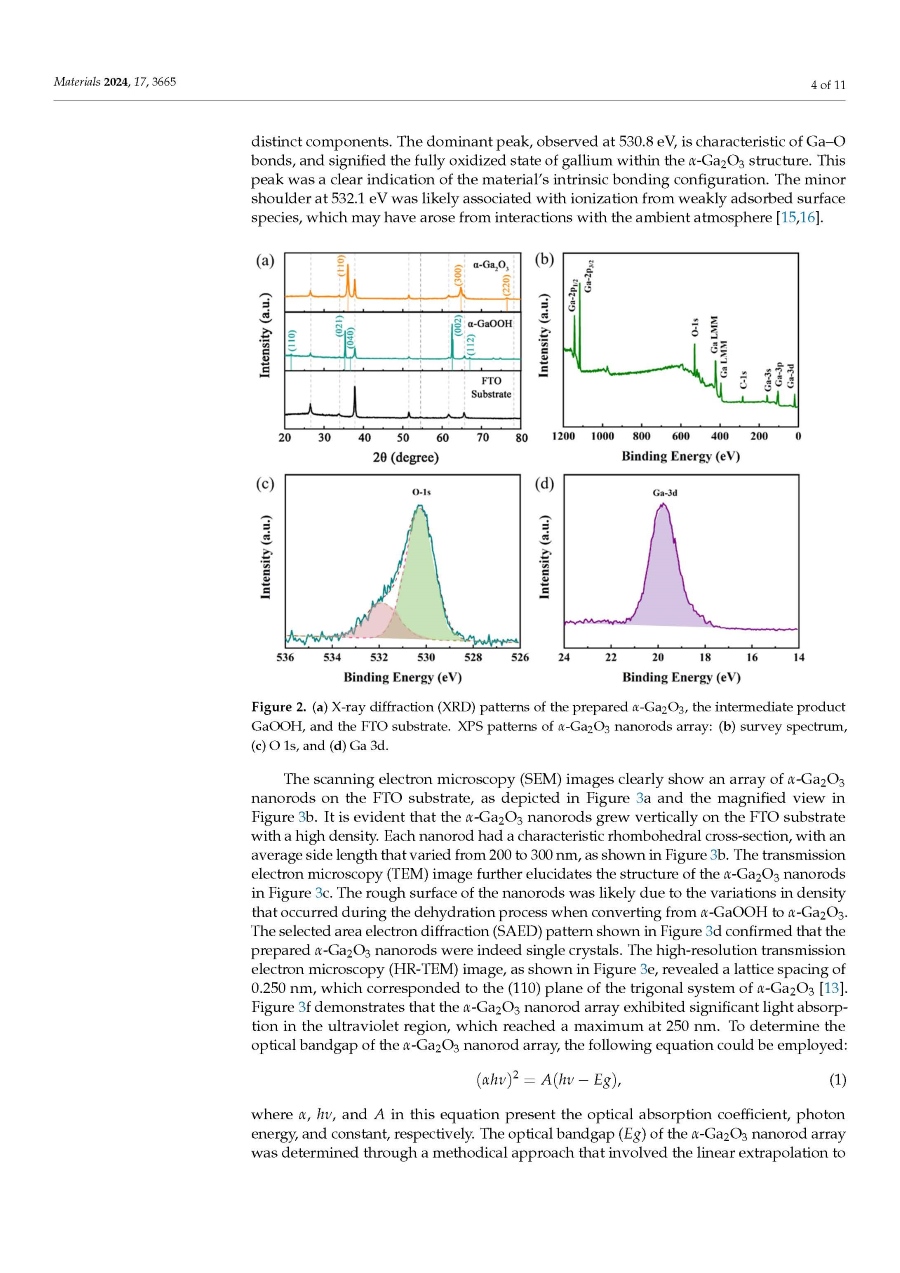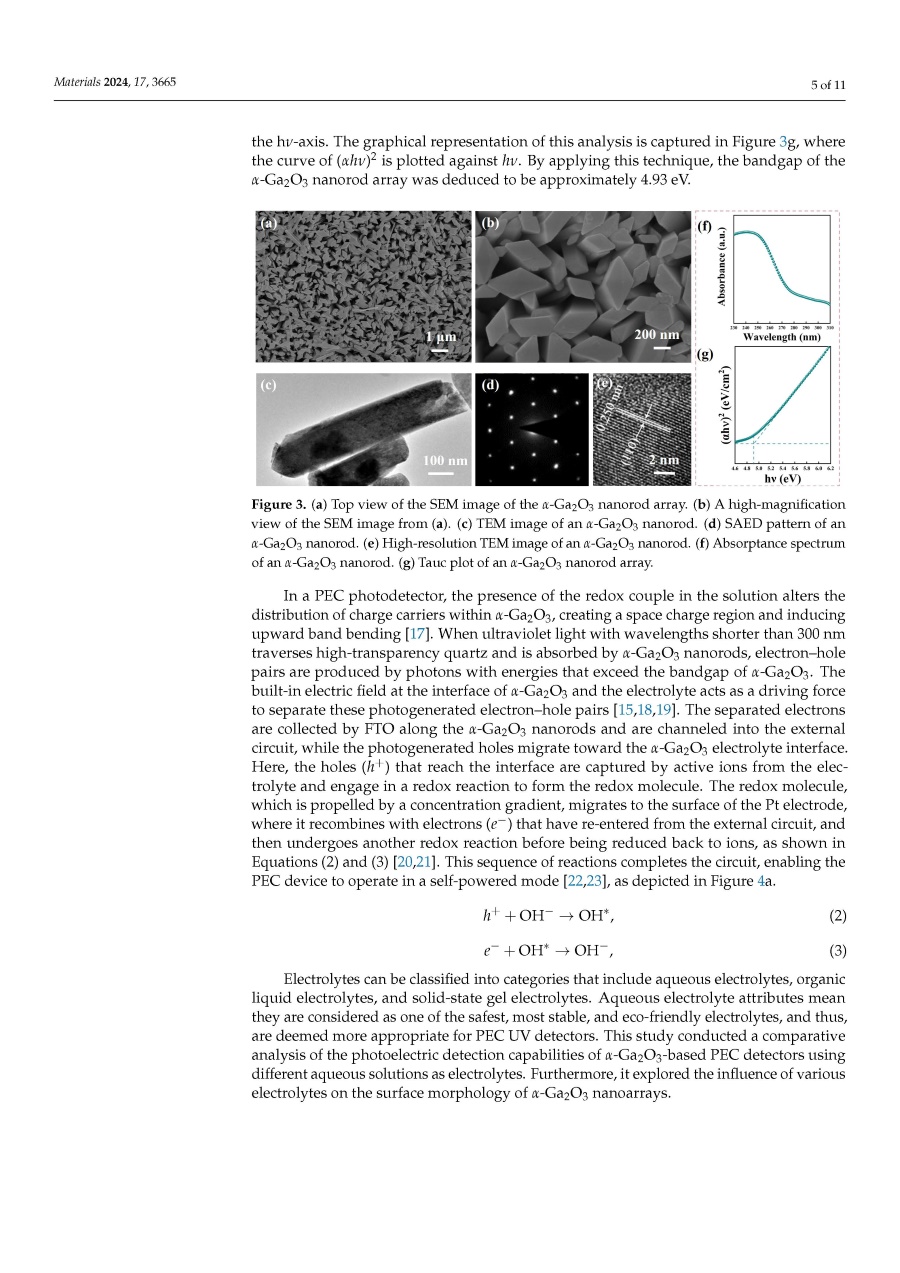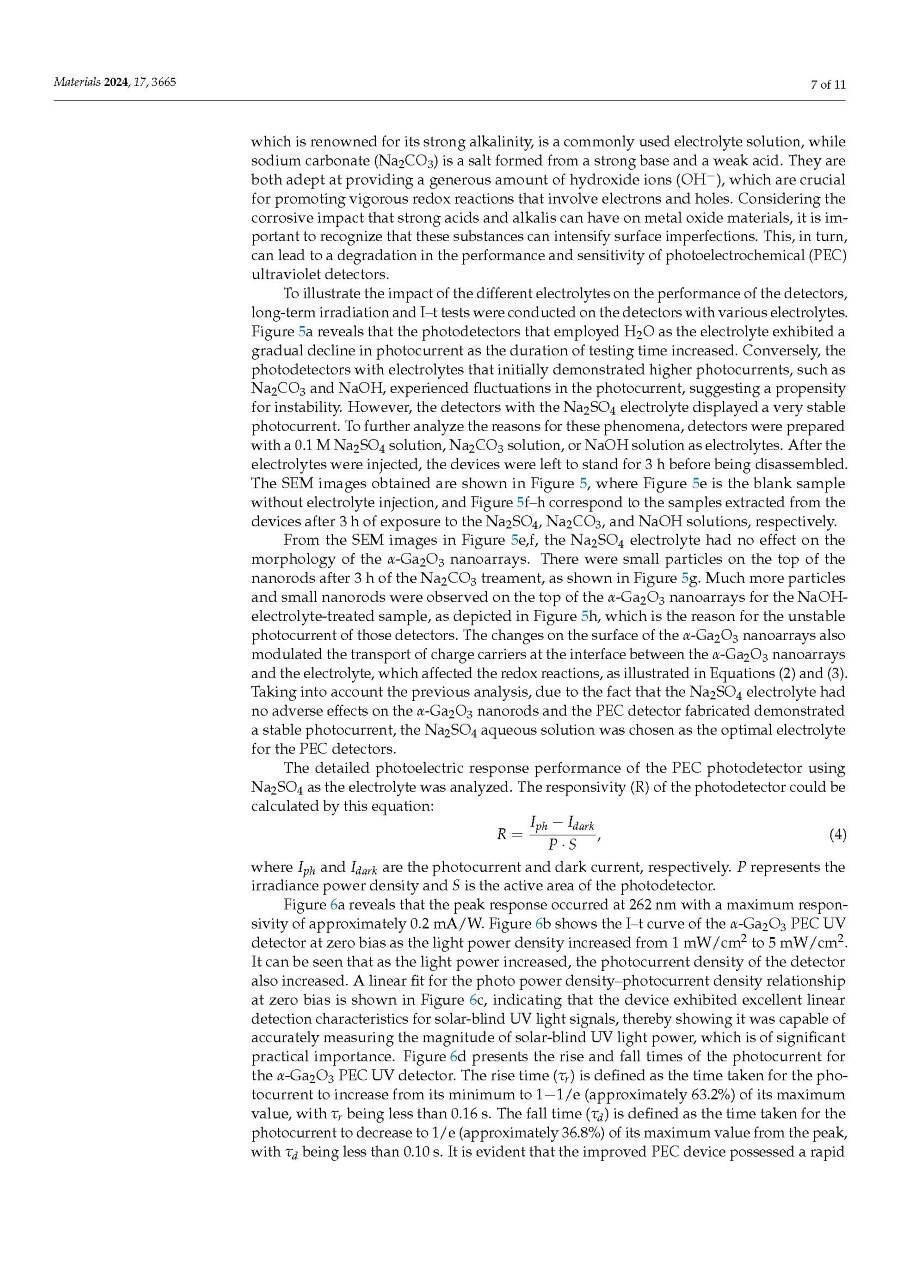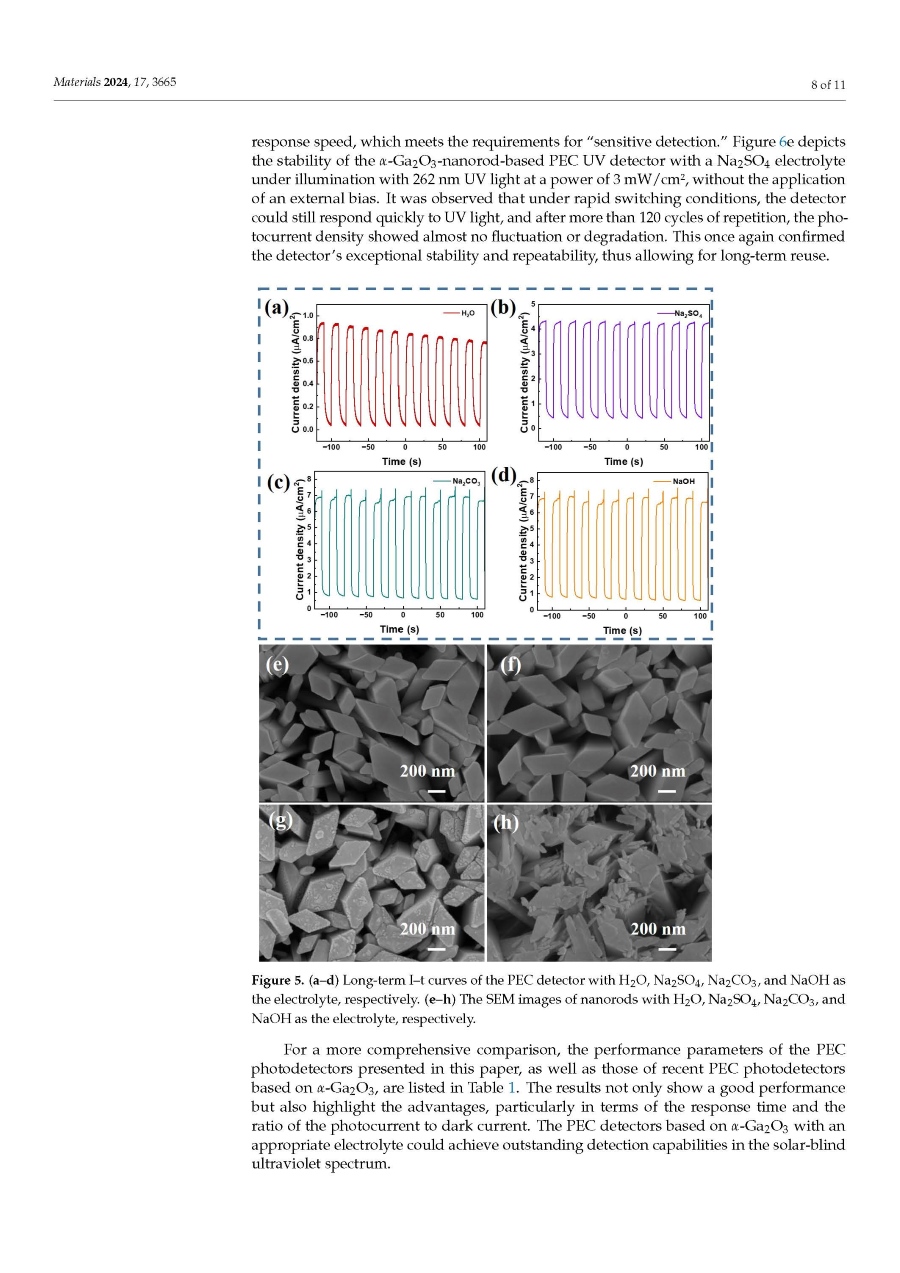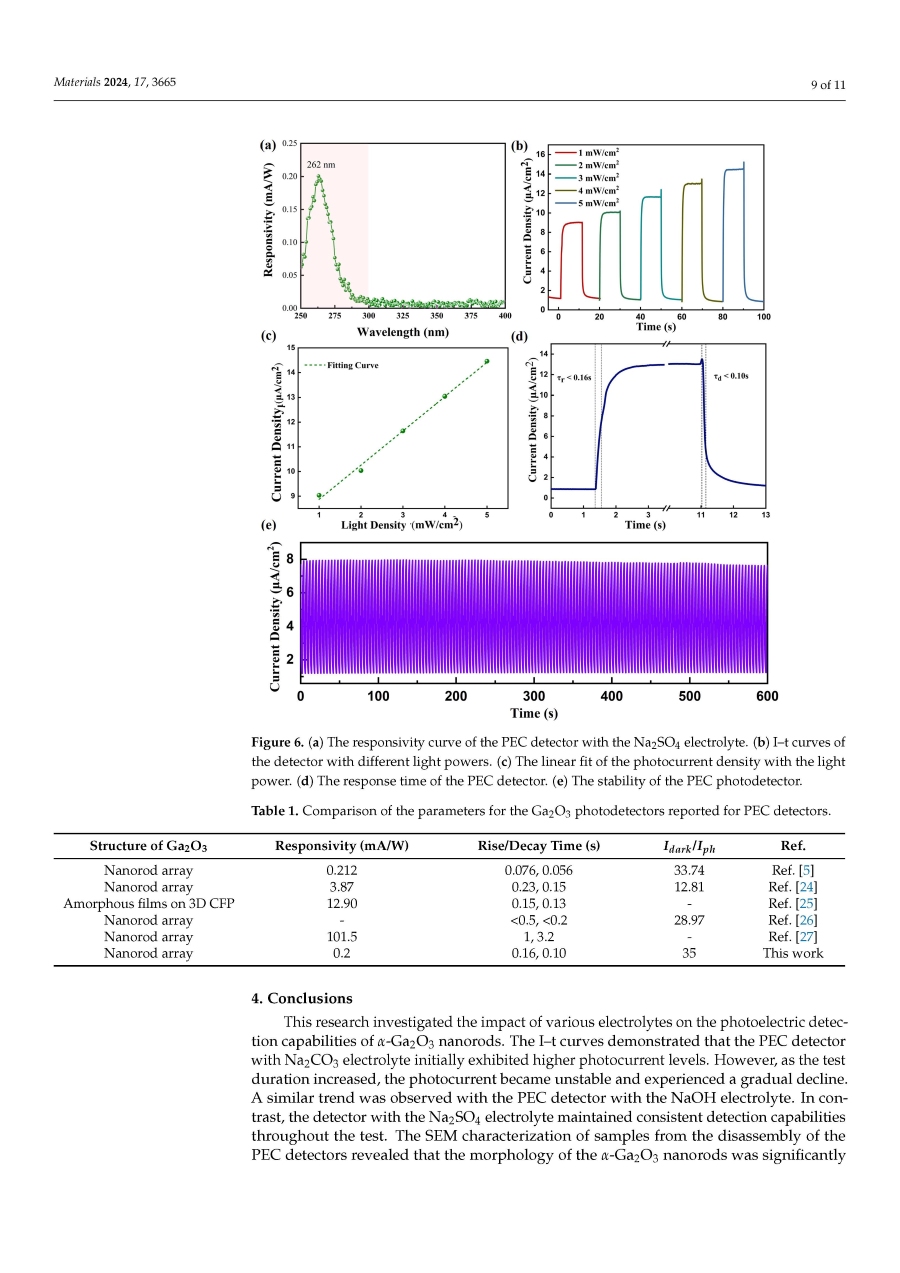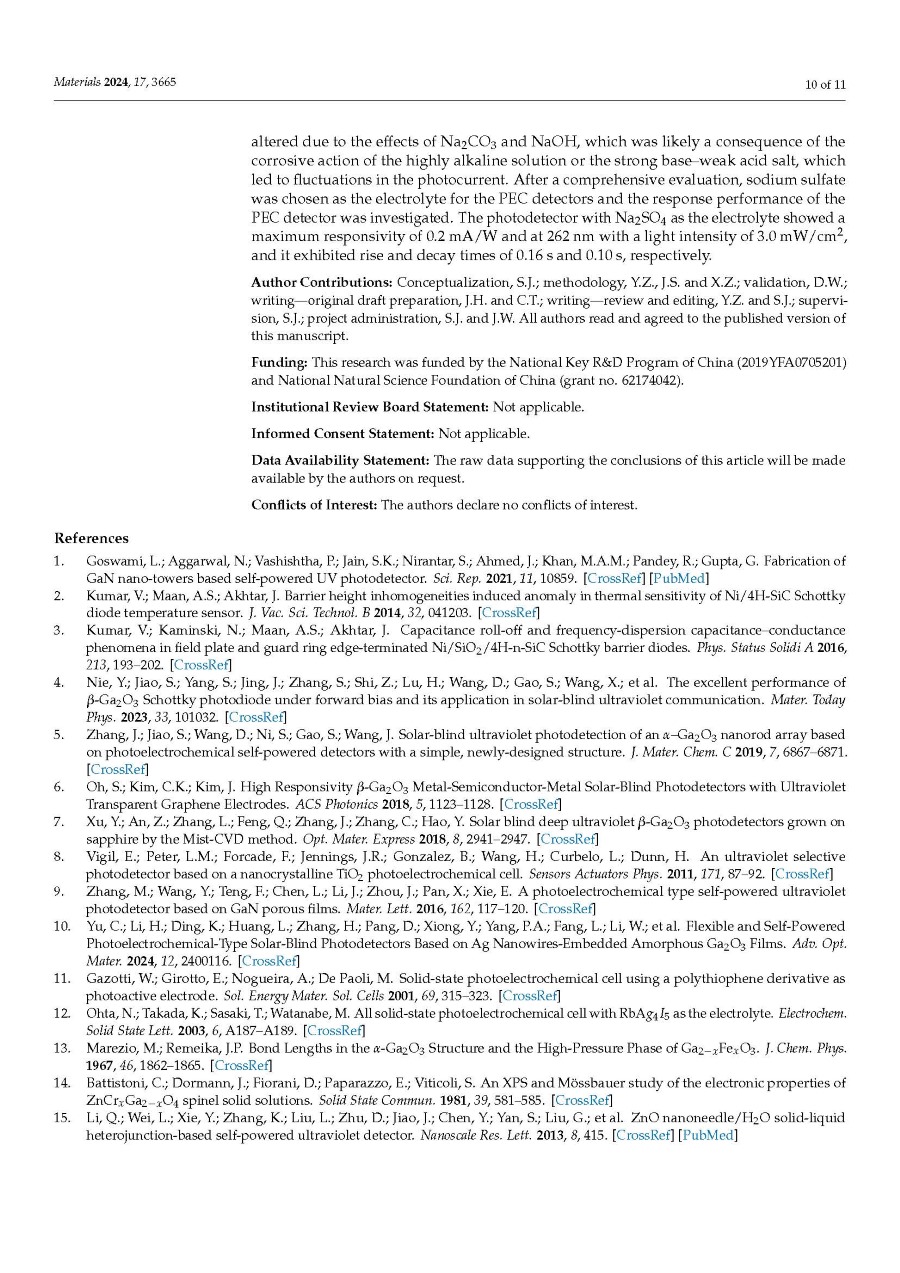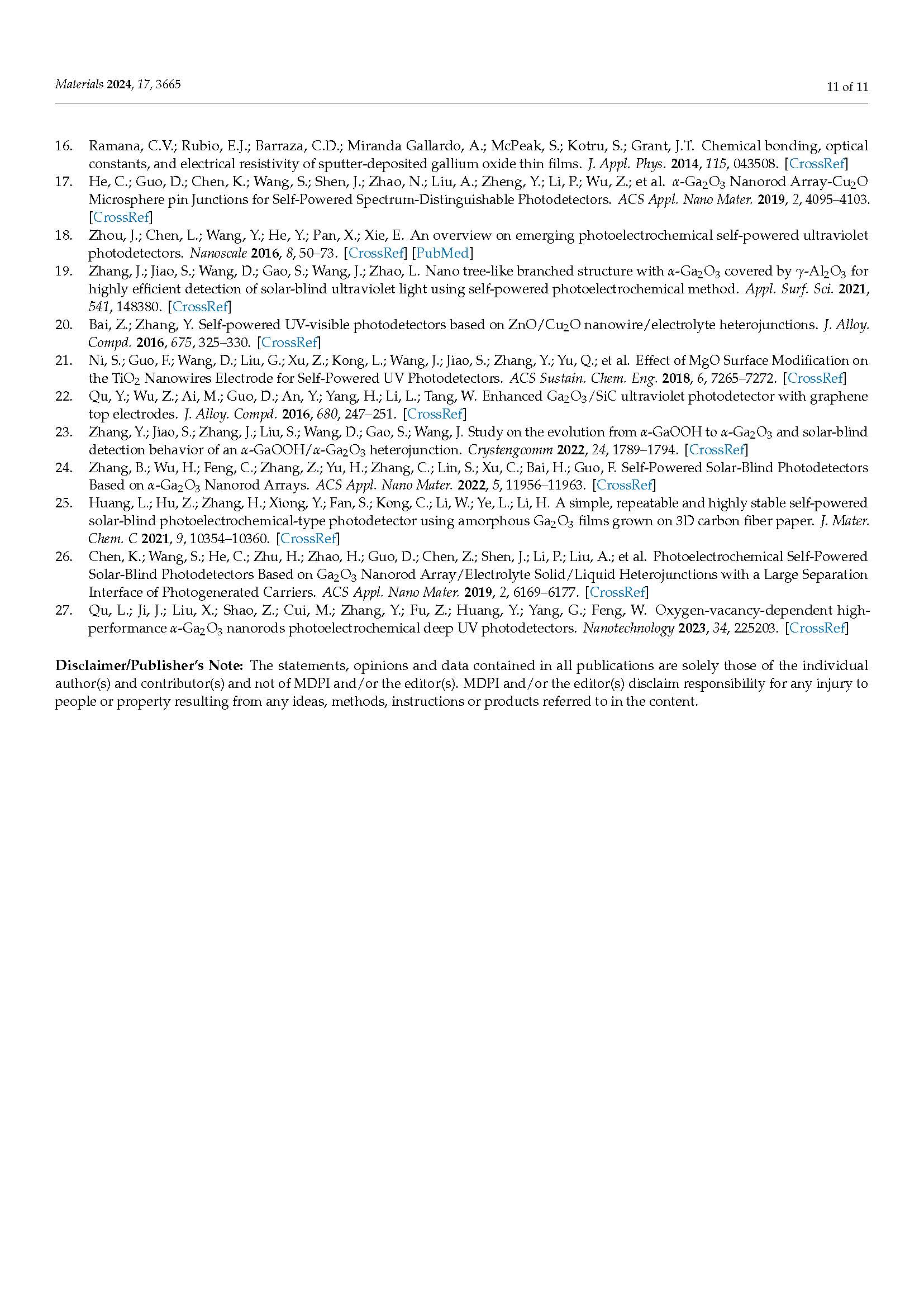

【Domestic Papers】Researchers from Harbin Institute of Technology Investigated the Influence of Electrolytes on the Performance of a Self-Powered Photoelectrochemical Photodetector Based on α-Ga₂O₃ Nanorods
日期:2024-10-18阅读:577
Researchers from the Harbin Institute of Technology have published a dissertation titled "The Influence of Electrolytes on the Performance of Self-Powered Photoelectrochemical Photodetector Based on α-Ga2O3 Nanorods " in Materials.
Abstract
Photodetectors have a wide range of applications across various fields. Self-powered photodetectors that do not require external energy have garnered significant attention. The photoelectrochemical type of photodetector is a self-powered device that is both simple to fabricate and offers high performance. However, developing photoelectrochemical photodetectors with superior quality and performance remains a significant challenge. The electrolyte, which is a key component in these detectors, must maintain extensive contact with the semiconductor without degrading its material quality and efficiently catalyze the redox reactions of photogenerated electrons and holes, while also facilitating rapid charge carrier transport. In this study, α-Ga2O3 nanorod arrays were synthesized via a cost-effective hydrothermal method to achieve a self-powered solar-blind photodetector. The impacts of different electrolytes—Na2SO4, NaOH, and Na2CO3—on the photodetector was investigated. Ultimately, a self-powered photodetector with Na2SO4 as the electrolyte demonstrated a stable photoresponse, with the maximum responsivity of 0.2 mA/W at 262 nm with the light intensity of 3.0 mW/cm2, and it exhibited rise and decay times of 0.16 s and 0.10 s, respectively. The α-Ga2O3 nanorod arrays and Na2SO4 electrolyte provided a rapid pathway for the transport of photogenerated carriers and the built-in electric field at the semiconductor–liquid heterojunction interface, which was largely responsible for the effective separation of photogenerated electron–hole pairs that provided the outstanding performance of our photodetector.
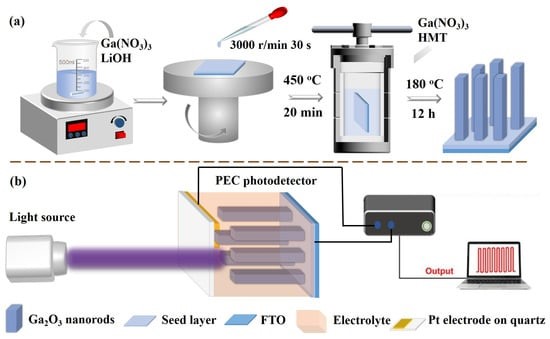
Figure 1. (a) The schematic diagram of the processing of the α-Ga2O3 nanorods. (b) The measurement setup of the α-Ga2O3-nanorod PEC photodetector.
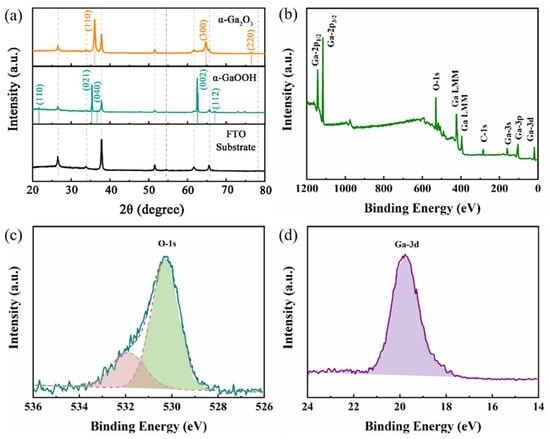
Figure 2. (a) X-ray diffraction (XRD) patterns of the prepared α-Ga2O3, the intermediate product GaOOH, and the FTO substrate. XPS patterns of α-Ga2O3 nanorods array: (b) survey spectrum, (c) O 1s, and (d) Ga 3d.
DOI:
https://doi.org/10.3390/ma17153665
